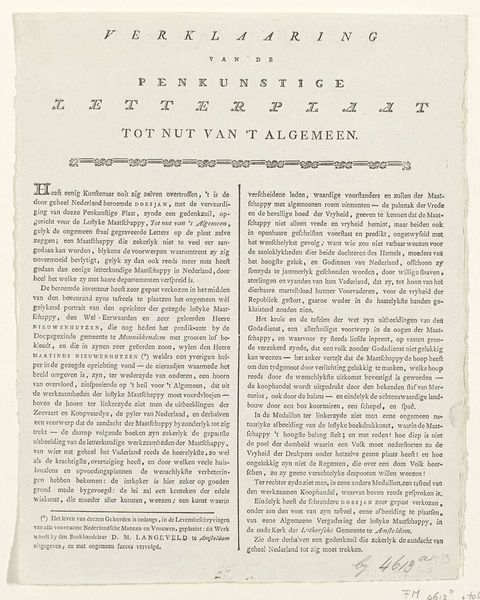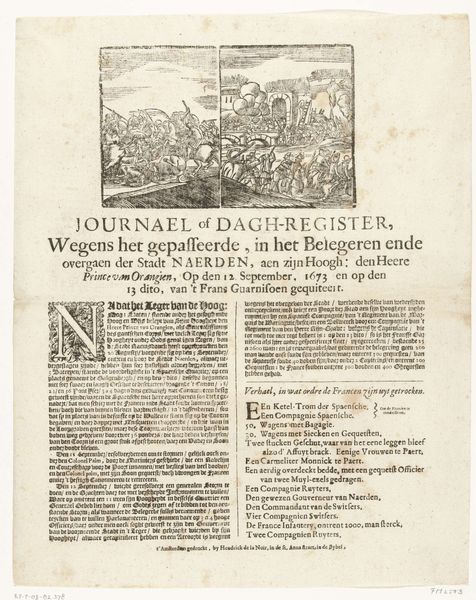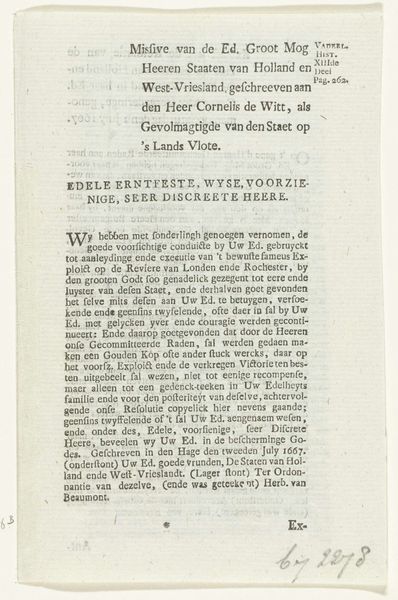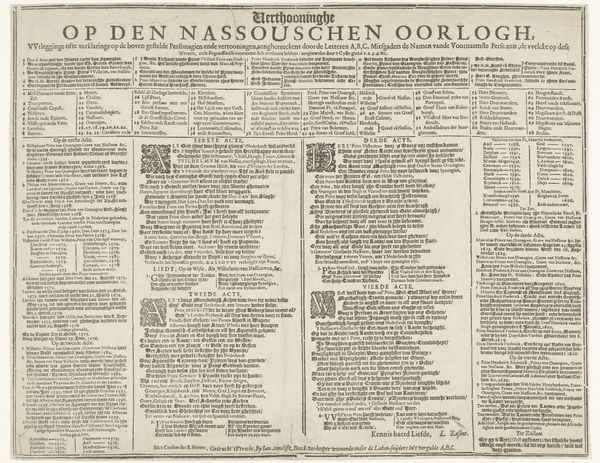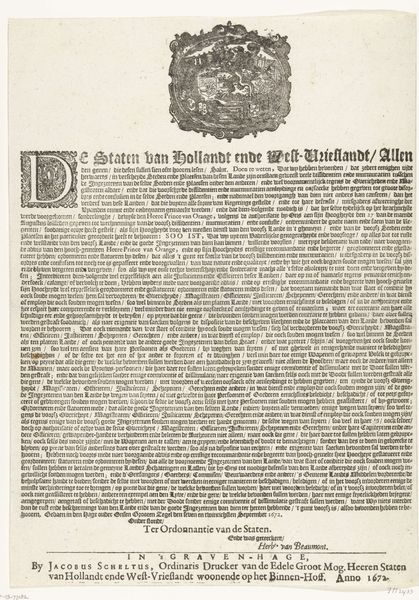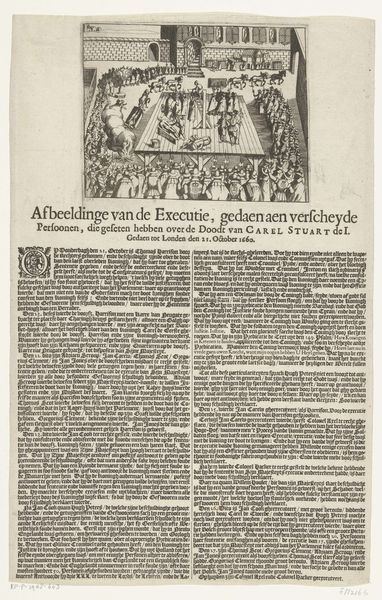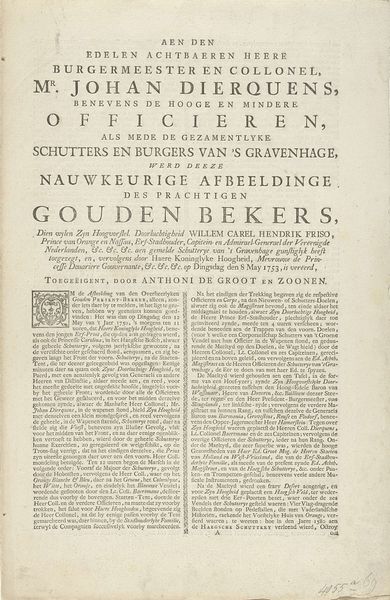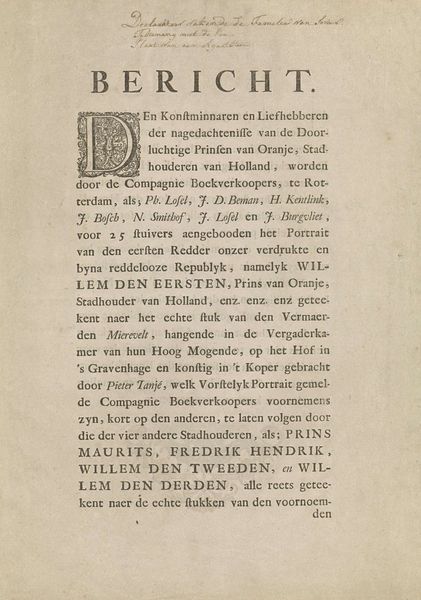
Waarschuwing van het Amsterdams Gerecht tegen de auteurs van het pamflet getiteld Billyk verzoek der Amsterdamsche Burgerye 1748
0:00
0:00
print, textile, typography
# print
#
textile
#
typography
Dimensions: height 531 mm, width 367 mm
Copyright: Rijks Museum: Open Domain
Editor: This broadside, "Warning from the Amsterdam Court Against the Authors of the Pamphlet Entitled Billyk Request of the Amsterdam Bourgeoisie," from 1748, printed by Samuel Lamsveld... it feels incredibly dense, just a wall of text. I'm immediately curious about who would have taken the time to read it, and under what circumstances. What can you tell me about it? Curator: This isn't just a piece of ephemera, it's a fascinating window into the social and political tensions of 18th-century Amsterdam. It directly engages with a pamphlet advocating for citizens' rights, signalling a moment of active debate between the ruling powers and the populace. Who do you think this was targetting, and what would this have meant to someone who could actually read? Editor: I imagine this was intended for the literate merchant class, perhaps those involved in city governance or politically active guilds. Its effect... well, depending on their leaning, it could be a warning, or, maybe even fuel dissent further? Curator: Precisely! These pamphlets circulated widely, often read aloud in public spaces. The typography itself – the use of bold text and capitalization – emphasizes specific phrases, almost shouting at the reader, attempting to control the narrative. Do you see hints of an active attempt to squash dissent, right there in its formal characteristics? How about its use of official visual cues, such as the coat of arms? Editor: I hadn't considered the visual elements as a form of rhetoric themselves, it’s like propaganda through font choices! That changes my reading completely. Thank you for illuminating that! Curator: It is an appeal to authority masked as objective information, weaponized with typography. By examining its distribution and impact, we begin to unpack broader questions about power, control, and resistance during a pivotal period in Dutch history.
Comments
No comments
Be the first to comment and join the conversation on the ultimate creative platform.



